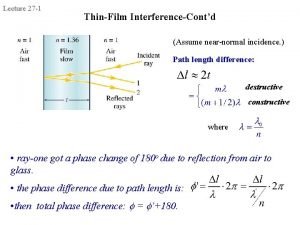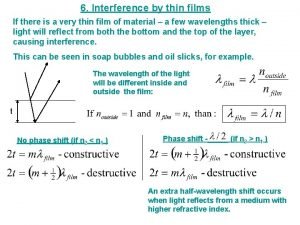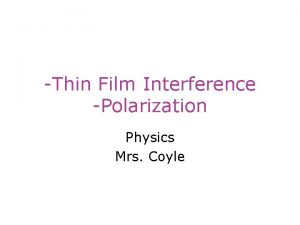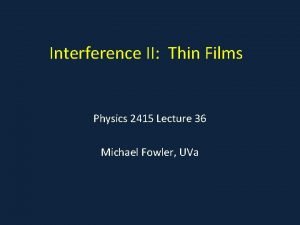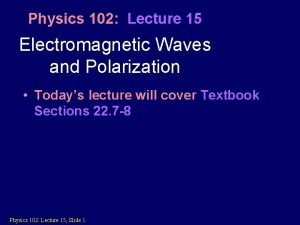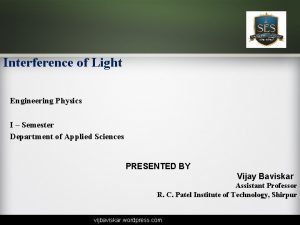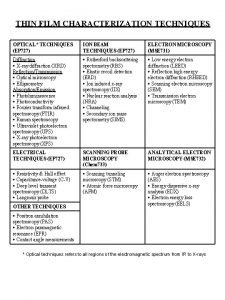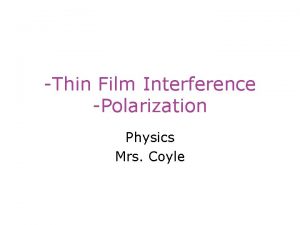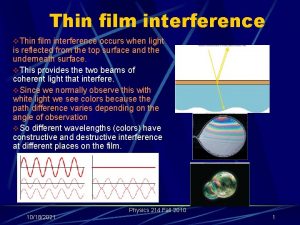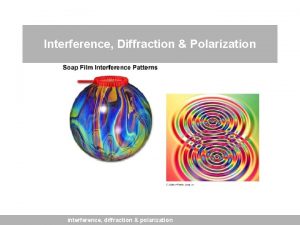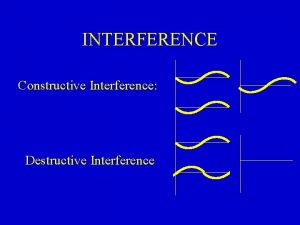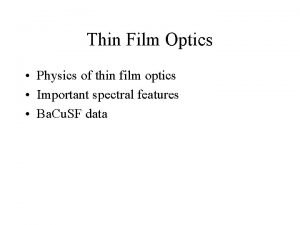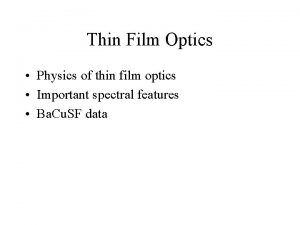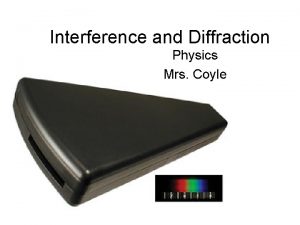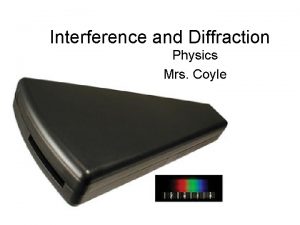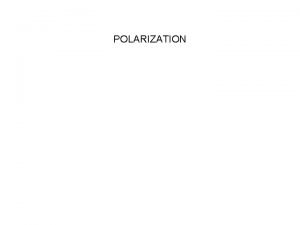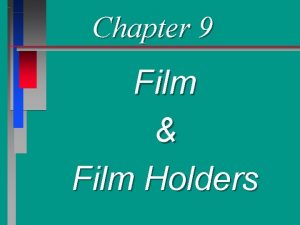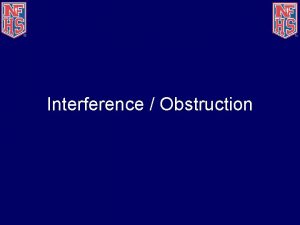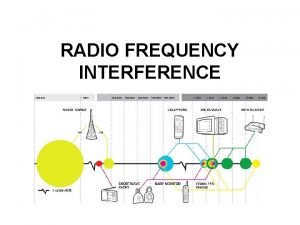Thin Film Interference Polarization Physics Mrs Coyle Thin













- Slides: 13

-Thin Film Interference -Polarization Physics Mrs. Coyle

Thin Film Interference http: //graphics. stanford. edu/courses/cs 348 b-competition/cs 348 b-08/finals/soap. png

Thin Film Interference

Thin Film Interference http: //laser. physics. sunysb. edu/~hilary/grap hics/interference. gif

Thin Film Interference

Thin Film Interference Ray 1 travels into the film and back it travels 2 t (twice thickness of the film). The path difference between the rays when they come out of the film is 2 t.

Condition for Constructive Interference: The reflected rays coming out of the film (5) and the rays that reflected on the film interface with the air(2), must have a path difference of an integer multiple of l/2. This is because (2) flipped going from a less dense to a more dense medium. Note: l is the wavelength in the film.

Condition for Constructive Interference Path Difference= 2 t =ml /2 so thickness, t= ml /4 where m=1, 3, 5… t is the thickness of the film. Minimum thickness occurs when m=1.

Problem Calculate the minimum thickness of a soap bubble that results in constructive interference when a light of wavelength 500 nm shines on it. Answer: 125 nm

Newton’s Rings Waves reflecting from two surfaces can interfere. Here light is reflected at glass/air and air/glass interfaces (sandwiched). The interference produces concentric rings of rainbow colors.

Uses • To get rid of unwanted interference on camera lenses etc use appropriate coatings. Here, coatings get rid of reflecting light of middle of spectrum so the lens appears red/violet.


 Interference in thin film
Interference in thin film Interference in thin film
Interference in thin film Thin film interference
Thin film interference Thin film interference
Thin film interference Diffraction and polarization
Diffraction and polarization Proactive interference example
Proactive interference example Retroactive vs proactive interference
Retroactive vs proactive interference What is thin film in physics
What is thin film in physics Polarization in physics
Polarization in physics Interference of light engineering physics
Interference of light engineering physics They are mrs garcia and mrs castro
They are mrs garcia and mrs castro They are mrs garcia and mrs castro
They are mrs garcia and mrs castro Mrs. darling was ___________ of mrs. s.
Mrs. darling was ___________ of mrs. s. Thin film characterization techniques
Thin film characterization techniques
